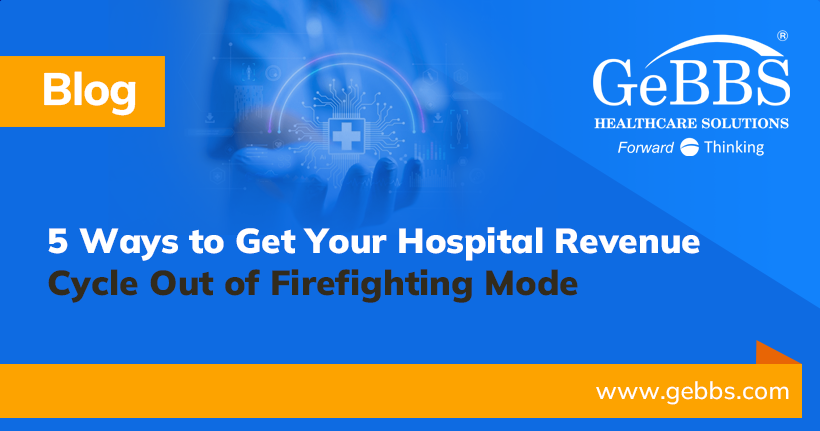Structured patient data is a vital component in the drive toward healthcare interoperability, and access to structured patient data is increasingly critical to provider and payer risk adjustment.
Structured patient data fills the risk adjustment framework with a panoramic picture, yielding insights about gaps in care and other challenges, as well as opportunities to save costs and improve the patient journey. Although access to structured patient data is improving, unstructured — or unstandardized — data from multiple healthcare provider and payer sources continues to present obstacles.
The State of Structured Patient Data
The shift to standards-based, electronic health records (EHRs) is a monumental effort, and structured patient data is at its foundation.
Moving from paper records and legacy technology to AI-enabled health information solutions requires transitioning — and translating — unstructured patient data and making relevant information available to applicable stakeholders. This conversion is a foremost hurdle to interoperability, according to a recent survey by the Healthcare Information Management Systems Society (HIMSS).
A vast majority of patient data remains unstructured. Some recent industry assessments indicate unstructured data may comprise more than 80 percent of a healthcare organization’s database. And the HIMSS survey suggests that nearly three-quarters of the unstructured data is not available to crucial provider and payer stakeholders.
As more health organizations update their information systems, more research is being devoted to the secondary use of structured electronic medical records and the protections in place to allow providers and payers to share pertinent details without compromising patient security.
One 2021 study found clinical benefits and performance improvements associated with structured electronic medical records based on standardized data embedding. Another 2021 study noted that despite the recent wave of patient data hacks and malware attacks, health information technology and artificial intelligence hold the potential to enhance both privacy protection and data quality.
Access to structured patient data is essential to moving healthcare forward. Standardized data for patient demographic information, medical histories, test results, treatment details, medication responses and other specifics allows for the extraction of precise, actionable intelligence.
Structured patient data leads to more accurate and complete patient profiles. It can accelerate research and allow the retrospective study of patients with shared health symptoms. It can point the way for solving clinical problems more promptly and cost-effectively.
Structured Data and Patient Care Gaps
Widespread structured patient data access offers several significant benefits to patient care.
Consider the possibilities for clinical trials alone. Insufficient patient recruitment is a leading cause of clinical-trial delays, and more than half of clinical trials are delayed or extended because they fail to reach their initial sample-size targets.
A 2021 study of electronic health records conducted at Finland’s Turku University Hospital found that EHRs are valuable in identifying prospective clinical trial participants when the trial selection criteria can be searched via structured patient data. However, researchers noted that appropriate criteria are not always available in a structured data format. They also noted that different data terminologies from different sources lead to discrepancies between the EHRs and the search queries that might be used to locate clinical trial candidates.
Health equity is another area in which artificial intelligence and structured patient data access can be used to pinpoint and close gaps. For example, COVID-19 infection rates and hospitalizations have disproportionately affected minorities.
A recent study published in the Journal of the American Medical Informatics Association examined whether biased COVID data models utilized by AI-enabled systems could worsen the health equity gap. Researchers concluded “there is an urgent need to enforce the systemic use of reporting standards and developing regulatory frameworks” for shared data sources.
Access to structured patient data has also become more critical to clinical decision support (CDS) and the move toward value-based care. Total healthcare costs rise more than 7 percent, and length-of-stay grows by more than 6 percent when physicians don’t follow CDS best practices, according to a 2018 study published in the American Journal of Managed Care.
A primary culprit in these undesirable increases is unstructured patient data. Terminology standardization and structured patient data deliver faster, more accurate and more meaningful CDS insights.
Structured Patient Data and Health Information Solutions
Artificial intelligence is paramount to achieving and applying structured patient data.
AI-enabled health information solutions possess tools including machine learning and the artificial neural networks known as multilayer perceptrons (MLPs) capable of processing and managing unstructured data. AI technology remains young and rapidly evolving, but MLPs, in particular, have demonstrated complex problem-solving capabilities, particularly in the fields of health risk prediction and fitness tech.
When clean, consistent, structured patient data is accessible, an AI-enhanced health information system’s machine learning and MLP can leverage that data in real-time. This technology can study an entire patient journey; it can develop medical symptom models and build physician referral networks to improve patient direction efficiency and treatment accuracy.
It has the promise to reduce care gaps in rural areas and among minority populations by identifying disparities and enabling general physicians in remote locations to refer patients to proper specialists. It allows live collaboration among different healthcare providers. It can detect biomarkers for certain medical risks and track and compare them.
On a broad level, structured patient data imparts a more comprehensive view of the patient experience. Health information technology can use that data to measure outcomes and give healthcare leaders the knowledge they need to optimize efficiency, reduce costs, refine patient care and bolster public health.
GeBBS Healthcare Solutions: Forward Thinking
GeBBS Healthcare Solutions is a leader in AI-fueled health information management (HIM) and revenue cycle management (RCM) services. GeBBS is dedicated to helping providers and payers achieve interoperability while minimizing costs, increasing profitability and bettering the patient experience.
GeBBS has earned wide acclaim for its scalable, end-to-end HIM and RCM solutions that integrate leading-edge technology and skilled human resources to deliver measurable results. GeBBS is rated as one of Modern Healthcare’s Top 10 Largest RCM Firms, Black Book Market Research’s Top 20 RCM Outsourcing Services and Inc. 5000’s Fastest-Growing Private Companies in the United States.
Connect with us today by visiting gebbs.com to schedule a demonstration and learn how GeBBS can help your organization grow into the future.






